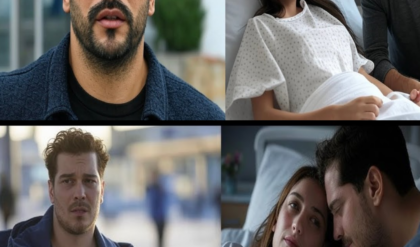The Queen guided her family and the United Kingdom through extraordinary social changes, displaying unwavering commitment through her record-breaking reign.
For decades, Queen Elizabeth II was a figure of national pride, a symbol of stability and continuity, who was respected around the world.
A devoted wife, mother, grandmother, and great-grandmother, she displayed an unwavering commitment to her country and the Commonwealth throughout her record-breaking reign.
From becoming Queen when she was only 25, she went on to become Britain’s longest-reigning monarch, and a head of state without equal on the world stage.
Her quiet, restrained demeanour guided her family and the United Kingdom through a period of extraordinary social change.
Dedicated to keeping the institution relevant, Her Majesty displayed an adaptability that many will credit with securing the future of the monarchy.
The early years of Lilibet

Princess Elizabeth waves from a carriage in 1928
Elizabeth Alexandra Mary was born on 21 April 1926. To her family and closest friends, she was known as Lilibet.
She was home-schooled and had a happy childhood growing up within a close-knit family with her younger sister Margaret.
But their lives changed dramatically in 1936 when their uncle Edward VIII abdicated and their father, the Duke of York, became King George VI. Elizabeth’s apprenticeship for a life of public duties had begun.
In a documentary in 1992, the Queen said: “I think training is the answer to a great many things. You can do a lot if you are properly trained and I hope I have been.”
During the Second World War, the princesses, like thousands of other children, were evacuated from London. At Windsor Castle Elizabeth would make her first radio broadcast.
At 18 she undertook national service, joining the Auxiliary Transport Corps, qualifying as a driver.
Her first overseas tour was to South Africa in 1947 with her parents.
During that tour she celebrated her 21st birthday in Cape Town and made what would become one of her most well-known speeches, where she confirmed her lifelong commitment to service and duty.
“My whole life, whether it be long or short, shall be devoted to your service and the service of our great imperial family to which we all belong,” she said.
Marrying Prince Philip

Princess Elizabeth and Philip Mountbatten upon announcing their engagement in 1947
Throughout the war, Princess Elizabeth kept in touch with Prince Philip of Greece and Denmark by writing letters.
Not everyone was impressed by how close they were becoming and some within the royal court had other ideas about the kind of man the princess should marry.
But in 1947, their engagement was announced. Their wedding later that year was the first great state occasion since the end of the Second World War and was described as “a flash of colour” by Winston Churchill following the hardship and austerity of the conflict.
The Duke and Duchess of Edinburgh, as they became, soon settled into married life and the birth of their first two children, Prince Charles and Princess Anne, quickly followed.
They had been married less than five years when their lives would change forever.
Becoming Queen

The Queen’s coronation in 1953
In 1952, while they were in Kenya as part of a royal tour, King George VI died.
Elizabeth, then 25, became Queen, and Prince Philip had to tell her that her father was dead.
“She would go to the bathroom every hour or so and maybe there in private she wept, but when she re-emerged was totally composed – and so she was when she appeared at London airport.”
Her coronation ceremony on 2 June 1953 was the first to be broadcast on television.
Despite the widespread celebration, the young monarch still had to show she was worthy of the job and able to take on all the responsibilities that came with it.
Historian Kate Williams said: “Winston Churchill initially was very unsure about her.
“He said she was too young, she was just a child, and he wasn’t the only person who thought that. She had to prove herself to the ministers, to the courtiers, to the people.”
And yet she would surpass any other British monarch in the length of her reign.
Life of service

Visiting the Tower of London in 2014
For over seven decades, she would become a constant presence in every aspect of national life – her annual Christmas message, laying a wreath at the cenotaph on Remembrance Sunday, conducting the state opening of parliament.
Her face etched on every coin, every bank note, every stamp.
Behind the scenes, Her Majesty was constantly at work carrying out her constitutional duties, dealing with red boxes full of official papers every day and holding weekly audiences with her prime ministers.
Former prime minister Tony Blair remembers those meetings fondly.
“You could say anything you wanted to her, in total confidence,” he said.
“So if you had any really difficult questions, you could discuss them with her, probably more than anyone else in the whole world actually.”

The Queen with Tony Blair, celebrating the start of the new millennium
In the documentary Elizabeth R, when asked about her prime ministers, the Queen said: “I have had quite a few prime ministers starting with Winston, and some stayed longer than others.
“They unburden themselves or they tell me what’s going on, or if they’ve got any problems and sometimes one can help in that way too.”
Largely she was regarded as rarely putting a foot wrong when it came to conducting her constitutional role and maintaining her political neutrality.
But there were moments.
Ahead of the Scottish referendum in 2014, she told well-wishers outside church: “I hope people will think very carefully about the future.”
Following the pro-union victory, David Cameron was overheard saying that the Queen “purred” when he told her the result.
The royal walkabout

Meeting children during a visit to the island of Jersey in 1978
The Queen saw it as a key part of her role to meet her people.
Along with Prince Philip, she pioneered the royal walkabout, which would become a regular fixture of their visits up and down the country.
Garden parties at the palace became more open affairs with a more socially diverse guest list during her reign, and despite her constitutional responsibilities there was still time to encourage and support more than 600 charities with which she formed ties.
Hundreds of visits every year allowed her to expertly perfect her skill for putting nervous members of the public at ease; her brightly coloured clothes always reflecting her belief that “she had to be seen to be believed”.
It was at times of national crisis that people would often turn to her, to share their grief and to look for some sense of guidance and stability.
She carried out visits to meet victims after tragedies such as the Aberfan disaster, albeit she was criticised for not going sooner, the Dunblane shooting, and the Manchester Arena bombing.
She made a rare address to the nation ahead of the Gulf War in 1991. And it was her poignant words of “we will meet again” in another historic broadcast during the first coronavirus lockdown in 2020 which rallied the country.
The Queen’s quiet diplomacy

The royal couple on the Great Wall of China
As well as travelling widely across the UK, the Queen undertook frequent overseas royal tours.
She was more widely travelled and met more of the world’s political and religious figures than any other international leader in the 20th century.
She also hosted dozens of world leaders at Buckingham Palace and Windsor Castle for state visits, some guests more controversial than others.
“We are the entertainment and play host,” she once said.
The G7 summit in Cornwall in 2021 was just one occasion where it was clear how much other leaders were in awe of her – although she had to miss a UN climate conference held in Glasgow in November last year as doctors said she should rest.
Widely respected for her decades of public service and experience, the Queen became renowned for her distinctive form of quiet diplomacy, often essential for maintaining Britain’s key overseas partnerships.
She had an understated charisma, a restrained style of leadership, and an ability to always ask the right questions to encourage others to talk and feel listened to.
As head of the Commonwealth, which had 54 member states by the end of her reign, and head of state for 14 realms, hundreds of millions of people looked to her as a leader.
Former secretary-general of the Commonwealth, Sir Sonny Ramphal, said: “She cared so much for this institution not just as a British institution, but as an institution for good in the countries of the Commonwealth and in the world.”

Welcoming Nelson Mandela for a state visit to the UK in 1996
At every Commonwealth heads of government meeting (CHOGM) that she attended, Queen Elizabeth would spend time meeting every leader; she believed that no matter how large or powerful the country, every leader was equal at CHOGM. It was a level playing field, unlike many other global associations.
For many she was also a figure of reconciliation.
Her historic visit to the Republic of Ireland in May 2011 was ground-breaking. It was the first visit by a British monarch in 100 years and was seen as a deeply symbolic gesture, formalising the normalisation of relations between Ireland and the UK following the signing of the Good Friday agreement.
She was also the first British monarch to visit China and Saudi Arabia, the first to step foot in a mosque, and the first to meet the Pope at the Vatican.
Her family

The royal couple with their four children in Windsor in 1968
Alongside the demands of being monarch, she was also deeply committed to her family.
She brought up four children, Prince Charles, Princess Anne, Prince Andrew and Prince Edward, and would go on to have eight grandchildren and 12 great grandchildren.
Until his death in 2021, Prince Philip was largely seen as head of the family and a constant figure of support for the Queen – her “strength and stay”, as she described him.
Mary Francis, her assistant private secretary during the 1990s, told Sky News the Queen’s consort always helped her out with her Christmas broadcast.
“The duke was probably the most important person who she consulted just on the text and the language.
“His support in those kind of ways, before the state opening of parliament as well, was terribly important.”
In a speech to mark their golden wedding anniversary in 1997, Prince Philip said: “The main lesson that we have learnt is that tolerance is the one essential ingredient of any happy marriage.
“It may not be quite so important when things are going well, but it is absolutely vital when the going gets difficult.
“You can take it from me that the Queen has the quality of tolerance in abundance.”
Her affection and love for him were shown when she announced the death of her “beloved husband” in April 2021.

The Queen cuts a solitary figure during Prince Philip’s funeral
Ahead of his funeral, she released a photograph of them casually dressed enjoying private time in Scotland, away from the spotlight that had shone on them throughout their married life.
The sight of the Queen sitting alone at the funeral, due to COVID restrictions, was a particularly poignant image to mark the end of one of the world’s most enduring partnerships.
‘Annus horribilis’

Prince Charles and Diana divorced in 1996
Some of the most publicly challenging times for Queen Elizabeth II were due to problems within her own family.
Early in her reign, she had to make the difficult decision not to give consent for her sister Princess Margaret to marry divorcee Peter Townsend.
But it was the 1990s that were widely regarded as some of her most trying years, and a low point for the popularity of the monarchy, as she saw her children getting divorced and a fire break out at Windsor Castle.
It would result in one of the most famous speeches of her reign.
“1992 is not a year on which I will look with undiluted pleasure. In the words of my more sympathetic correspondents, it has turned out to be an annus horribilis,” she said.
Her response to the death of Princess Diana in 1997 was widely criticised.

Prince William and Prince Harry during their mother’s funeral
The Queen initially stayed in Scotland, keeping her grandsons Prince William and Prince Harry away from London.
Eventually she returned to Buckingham Palace, where she made an unprecedented television broadcast praising Diana.
‘Megxit’ and other scandals

‘Megxit’ marked a difficult time for the Royal Family
More recently the reputation of the Royal Family was further challenged by questions over Prince Andrew’s friendship with convicted paedophile Jeffrey Epstein, and the very public split between the Duke and Duchess of Sussex and the rest of the Windsors.
Harry and Meghan quit as senior royals at the start of 2020. In a subsequent interview with Oprah Winfrey, they claimed an unnamed royal had raised concerns about what colour the skin of their son Archie would be.
Meghan also said she was denied help while feeling suicidal by parts of royal institution.
In both cases the Queen took charge to try to calm down the media storm, resulting in her son Prince Andrew stepping down from royal duties and Prince Harry having his ceremonial military titles removed.
When it came to scandals, you could see she held a clear conviction that the reputation of the institution came first, and no member of the family was more important.
‘Very happy living in the country’

The Queen with her beloved corgis in 1973
But despite that, she was a devoted mother and grandmother.
Family time at Sandringham in the winter and Balmoral in the summer were sacrosanct, and a time when she could enjoy her other passions.
Many would say the Queen was never happier than when surrounded by her family, her corgis, and watching or riding her horses.
The Queen’s cousin Patricia, Countess Mountbatten of Burma, once said: “If the Queen had been able to choose her own life, she would have been a very happy person living in the country with animals and dogs, taking part in community life and never having to do smart and grand things all the time.”
Horses were one of her greatest loves.
Whether she was out on her fell pony, or spending time at her stables checking on the latest horses she had bred, or those training to race.

The Queen riding a fell pony in Windsor in 2020
Her Majesty was widely admired in the world of horse racing for her extensive expertise, as the Duchess of Cornwall said at Ascot week 2021: “She can tell you every horse she’s bred and owned, from the very beginning, she doesn’t forget anything.
“I can hardly remember what I bred a year ago, so she’s encyclopaedic about her knowledge.”
The Queen’s biggest triumph came in 2013, when her star filly, Estimate, won the Ascot Gold Cup, one of the world’s most prestigious races. Footage of her excitement at winning was beamed around the world.
Those closest to her would often describe her wonderful sense of humour.
At times, often spurred on by her family, we would see flashes of that sense of fun in public – including her appearance with James Bond for the Olympic opening ceremony at London 2012, or teasing the Obamas with Prince Harry in a video ahead of the Invictus Games.
Milestones

The Royal Family gather at Buckingham Palace in 2018
As the Queen grew older, the whole country would come together to celebrate countless milestone moments; jubilees, birthdays and Queen Elizabeth II becoming Britain’s longest-serving monarch in 2015.
For the celebrations and the big balcony occasions at Buckingham Palace, her family would always be alongside her.
Prince Edward once described them as her “supporting cast”.
In 2012 at the Diamond Jubilee concert, Prince Charles paid his own tribute, saying: “Your Majesty, Mummy… as a nation this is our opportunity to thank you and my father for always being there for us, for inspiring us with your selfless duty and service and for making us proud to be British.”
Into her 90s, any suggestion the Queen would slow down, or step down, was soon quashed by her relentless work ethic.

Posing with the Royal Military Police for a family photo in 2007
Following the death of Prince Philip, and as coronavirus restrictions eased, she was quick to return to her duties.
In 2021, at the age of 95, she could not have appeared any more enthusiastic or fizzing with energy as she carried out public engagements across the country and again played host to presidents and political leaders.
The Queen celebrated her historic 70 years on the throne with the Platinum Jubilee in the summer of 2022. There were celebrations and street parties around the country – and the public packed central London for pageants, parades and concerts.

An extended four-day bank holiday was announced and the Queen made several appearances, including lighting a jubilee beacon at Windsor and a memorable moment on the Buckingham Palace balcony alongside her three heirs – Charles, William and George.
It was a fitting way to mark an extraordinary eight decades as monarch.
Transition within the monarchy was inevitable as she grew older, with the Prince of Wales and younger members of the family stepping up to support the monarch when she could no longer physically travel overseas or place a wreath at the Cenotaph.

But there was never any doubt who remained the enduring figurehead of the institution.
Her Majesty, Queen Elizabeth II, a truly remarkable monarch, who served her country and Commonwealth until the very end.



